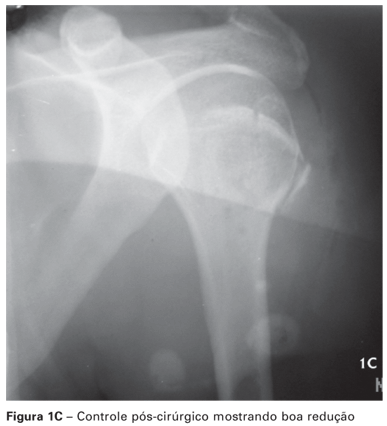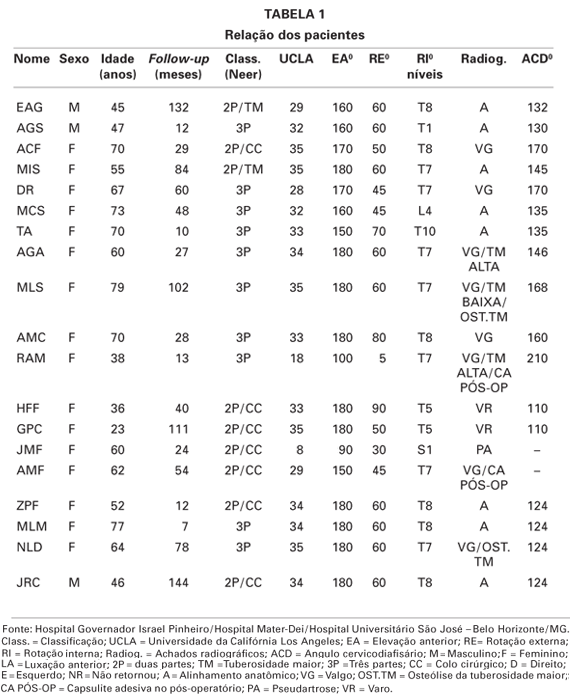OBJECTIVE: To evaluate the clinical and radiographic results of patients with two- and three-part fractures of the proximal end of the humerus treated with non-absorbable sutures and with incorporation of the rotator cuff, which allows for increased stability of the fixation, mainly in patients with low bone quality. METHODS: 19 patients were operated on, fifteen female and four male, with a mean age of 57.4 years (23-79 years) and a mean follow-up of 53.4 months (seven to 144 months). Based on Neer classification, the authors found ten three-part fractures (surgical neck and larger tuberosity), and nine two-part fractures (two of the larger tuberosity and seven of the surgical neck). All of them were operated in the beach chair position with endotracheal anesthesia and brachial plexus blockade. Deltopectoral approach was used for two-part fractures of the surgical neck and for three-part fractures. For two-part fractures of the larger tuberosity, transacromial approach was preferred. The fractures were reduced and fixated with non-absorbable number five sutures. The cervicodiaphyseal was measured to evaluate vicious consolidation. RESULTS: The authors checked bone consolidation in 95% of the patients. The mean anterior elevation in patients with two-part fractures was 163.3º (90º-180º), mean external rotation was 56º (30º to 90º), and the mean internal rotation of T10 (S1-T5). In patients with three-part fractures, mean anterior elevation was of 163°(100°-180°), mean external rotation was 52.5° (5°-70°), and the mean internal rotation of T10 (L4-T7). The abduction strength was equal to that of the contralateral side in twelve patients and lesser in 7 patients. The time required for the patient to go back to prior activities was a mean of 5.19 months (two to 12 months). In the radiological evaluation, the mean cervicodiaphyseal angle was of 141º (110º-170º) in two-part fractures, and it was of 150° (106°-210°) in three-part fractures, valgus consolidation being seen in nine patients (59%), and varus consolidation in two patients. Based on the UCLA score, there were 88.8% good and excellent results, and 11.2% of poor results for both types of fracture. The bad results were represented by a case of pseudoarthrosis and a case of adhesive capsulitis in the postoperative phase. CONCLUSION: Fractures in two- and three-parts of the proximal humerus may be satisfactorily treated with non-absorbable suture incorporating the rotator cuff, specially in the elderly. Metal-related complications are ruled out. Patients with fractures of the larger tuberosity treated with sutures may have similar results to those with surgical neck fractures. Although the objective of the surgery is anatomic reconstruction, some residual deformity does not prevent a satisfactory result. The method is little invasive, allows for a reasonable fragment stability, with high rates of bone consolidation and patient satisfaction. Patient cooperation is a key factor for the therapeutic success.
Humeral fractures; Humeral fractures; Shoulder fractures; Shoulder fractures; Suture techniques; Fracture fixation








